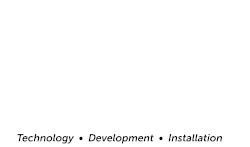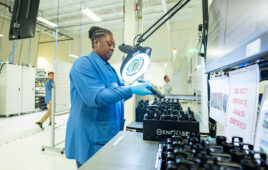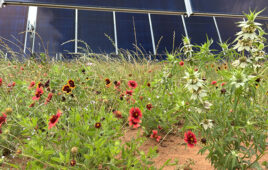By Harry Benson, director of business development, Standard Solar
Developing a greenfield solar project from the beginning adds significant value and return to the project developer. That’s why there’s a rush to develop early-stage solar projects.
Greenfield development is basically the creation of a solar project where there had not previously been one. You find the property, submit an interconnection application and build the project. Easy, right?
Well, the reality of greenfield development is far more complex than most people understand, and it takes several steps before you can put shovels into the ground. First, a full and comprehensive critical-issue analysis must be performed, with particular attention paid to the following:
- Selecting a state with a solid solar program and easy to navigate and predictable permitting process.
- Understanding the local government’s views regarding solar and their permitting process.
- Selecting sites and distribution lines that will have low-cost impact or upgrades needed on the local grid.
- Securing inexpensive land leases for property that does not have trees, wetlands or suitable habitat for threatened and/or endangered species.
Even if you have all those criteria in place, it’s still not enough to guarantee that a greenfield development will go smoothly. It’s also important that the state you choose has high electricity prices as well as a good solar program. If prices for electricity are too low or the Solar Renewable Energy Credits (REC or SRECs) too meager, the project won’t be financially viable.
Fortunately, there are a number of states for which those final two criteria are true. Perhaps the best state to do business in is Massachusetts, which has a great history and program, along with high electricity prices. Minnesota, like Massachusetts, has a strong renewable portfolio standard (RPS) and has advanced into community solar like no other state in the country. And most recently, Maryland passed a 50% RPS bill with a 14.5% solar carveout, which is expected to significantly accelerate solar in the state.
It also can’t be said enough: Check in with the local government early and often to make sure you have a full understanding of their attitude about solar projects. While people often focus on the national debates, it’s local and state regulations that really hamper the solar industry’s expansion. If you’re not up on what local regulators are thinking, you run the risk of running into rampant Not-In-My-Backyard (NIMBY)-ism — leaving you without the solar project you thought you were developing.
Start your education early. Whether it’s through social media, legacy media (newspapers and radio) or showing up at town fairs and meetings, it’s incumbent on the solar developer to properly educate local officials — because once they have the wrong idea in their heads, it’s often incredibly difficult to change it back.
Finally, it’s easier than ever to secure good land leases because of the GPS capabilities that all local governments have now. It allows you to see where all the good sites are, which makes land acquisition more cost-efficient than it has been in the past.
Combined with engineering surveys and title searches, it also provides you with a preview of any environmental or legal encumbrance concerns there may be with a piece of land, giving you a much clearer picture of whether or not the land is appropriate for a project. Remember, just because land gets sun, it doesn’t automatically make it the right choice for a project. Finding the right location makes a project more competitive for financing.
Engaging the right partner and acquiring financing early, before all the extra work starts, is another way to make greenfield development easier. Adequate funding can be the difference between a project succeeding and failing. As a bonus, engaging financial partners early in the process allows the partners to share the risks of the project, making it easier to get projects started and completed.
Though each partner has specific needs, they are all searching for a financing partner that has these four characteristics:
- Low cost of capital
- Tax equity solution
- Easy and flexible to work with
- A savvy, experienced team that can navigate the complicated and risky world of solar project financing
Early money supports the toughest financing of any project: development capital. The project is much more likely to be a success if developers work with a partner that supports interconnection costs and decommissioning bonds via up-front milestones payments. If the money is there, the chances it will get built rise exponentially.
Developers can lessen their financial burden by working with a company with a low cost of capital that can balance-sheet construction (financing) or do the equipment procurement for the project. It can free up 40% to 50% of the working capital for the developer and allow it to work on more projects at once.
Unlike banks, solar/financing companies that have access to low-cost capital just want to achieve their return — anything above and beyond that goes back to the customer. Experienced solar/financer companies can also perform their own due diligence, which saves money on transaction costs and provides more money to the developer’s profit margin.
Further, finding a company that has tax-equity experience can be the difference between a successful and unsuccessful project. Selecting a company that has in-house tax equity and regular access to tax equity funds saves the developer time and allows it to focus on development work without having to get caught up on the specifics of getting tax-equity funding.
Though greenfield projects are perceived to be the easiest types of deals to get done, lack of financing often ends a project before it begins. Finding a partner that can provide access to early money can alleviate much of that pain and lead to a successful project for everyone involved.
 Harry Benson is director of business development for Standard Solar with a focus on the Midwest. He has more than 12 years of utility and distributed generation renewable energy experience in both wind and solar generation. He’s responsible for focusing the company’s efforts to deploy its low-cost capital and partner with C&I developers in the Midwest. He has 25 years of business experience and is a life-long advocate for environmental issues.
Harry Benson is director of business development for Standard Solar with a focus on the Midwest. He has more than 12 years of utility and distributed generation renewable energy experience in both wind and solar generation. He’s responsible for focusing the company’s efforts to deploy its low-cost capital and partner with C&I developers in the Midwest. He has 25 years of business experience and is a life-long advocate for environmental issues.







Tell Us What You Think!